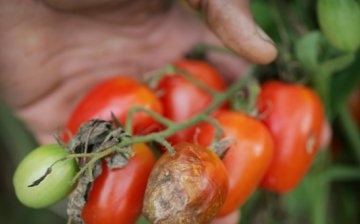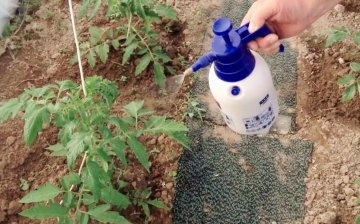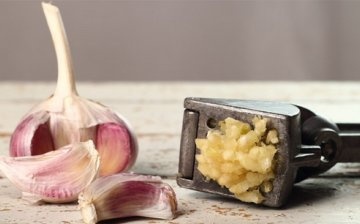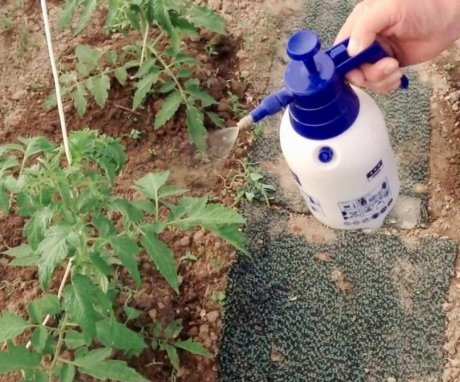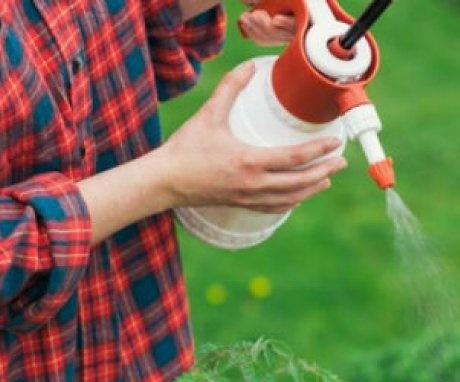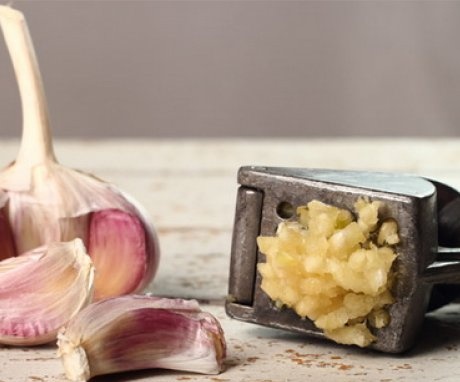What is late blight and how to deal with it?
Phytophthora known to people since ancient times. These are parasitic fungi that infect many agricultural plants and often lead to their death. They belong to the oomycete class, which includes about 50 species.
Content:
Late blight and late blight: what is it
Phytophthora mushrooms cause a dangerous disease - late blight. It affects nightshades primarily tomato, potato... Do not react so painfully pepper and eggplant... Buckwheat suffer from phytophthora, strawberry, castor bean flower.
Tomatoes and potatoes infect fungi of the species Phytophthora infestans, which in Latin means "destroying plants".
Phytophthora, like any mushroom, consists of mycelium, sporangia and conidia. The mycelium looks like a white web. It lives and develops in plant tissues. The fungus reproduces by spores and asexual means - by conidia. Spores are formed in sporangia. After the spores mature, the shell of the sporangium ruptures and they come out. Then they spread with water, get on plants and begin a new life cycle. In winter, phytophthora spores are found in tops, plant remains. Some species simply hibernate in the ground. They are not afraid of frost. They develop actively when the temperature rises from 10 to 15 degrees and humidity is above 75% (if such conditions persist for more than 2 days).
Ways of spreading phytophthora:
- Conidia reproduce on leaves, passing from one plant to the next. Up to 16 zoospores are formed from one conidia. They live for several hours, but during this time they manage to make trouble.
- After the plant dies, the spores remain alive. They enter the soil, then move on to another plant.
- The rain washes the spores of the fungus into the soil, from where they are passed on to other plants.
- Spores are easily carried by wind over long distances.
The first signs of late blight disease are brown spots on the leaves and stems of plants. If the air humidity is high, the inside of the leaves is covered with a white bloom. Dark depressed spots are visible on young potato tubers or tomatoes affected by late blight. The skin of the tubers becomes fragile. Through it, a bacterial infection penetrates inside. This causes rotting and rapid decomposition of tissues, accompanied by an unpleasant odor. Therefore, phytophthora is also called potato rot or brown rot of tomatoes.
Late blight tomatoes can be affected not only in the garden. Often, the owners try to save at least part of the crop by picking green fruits and hiding them for ripening. But along with the fruits, phytophthora fungi are laid in boxes. After a while, they cause disease and death of the fruit.
Ways to combat late blight
Late blight delivers a lot of trouble to potato growers. It reduces the yield, sometimes significantly. But tomatoes are doing even worse. Sometimes it happens that the entire crop is completely lost the next day after the measures taken to save them: treatment with phytoncides, pinching, tying on supports. And this does not happen in spring or early summer, but in July-August, when a lot of effort and money has already been invested in the seedlings, and it only remains to wait for the harvest. This suggests that a mistake was made somewhere.There are no trifles in the fight against late blight.
In order to keep tomatoes from defeat by late blight, it is necessary to plant varieties that are resistant to this disease. There are no absolutely protected varieties. The following are considered more stable:
- Ground Gribovsky 1180
- Cameo
- White filling 241
- Solar
- Berry
- Snezhana
- Profitable
- Dubrava
- Grotto
- Gratifying
To quickly get a large number of tomatoes, early fruitful varieties are planted. Usually they have time to mature before the mass development of late blight. But gardeners want to stretch the period of consumption of fresh tomatoes. In this case, it is imperative to carry out regular plant treatments before the first signs of the disease appear.
It is better to alternate treatments with different preparations. They use Ridomil Gold, Quadris, Ditan, Bordeaux mixture, copper oxychloride. Biological preparations "Fitosporin", "Trichodermin" are used not earlier than 2 weeks after treatment with "chemistry". An important place in measures to combat late blight is the correct crop rotation... Tomatoes are not planted after potatoes. Damaged roots are carefully removed from the site so as not to leave pathogens in the garden.
The disease quickly affects tomato bushes lying on the ground, in the leaves of which the air stagnates. This must be avoided. Tomatoes are best placed at a distance of 70 cm from each other. Plants, especially tall and medium-sized varieties, constantly stepchild, tie the stems to twigs or supports. This reduces the risk of stem and leaf contact with the soil and allows the air to carry away excess moisture. Be sure to remove the lower leaves. They usually turn brown, which sometimes indicates a lesion with late blight. Weeds are carefully removed, which contributes to the exposure of the plants to more sunlight, which kills the conidia of the fungus.
It has been noticed that the disease develops much less frequently in areas where the soil contains a large amount of copper.
To increase it, plants are treated with copper oxychloride. For this, 20 g of the drug is dissolved in a liter of water. Potassium and phosphorus strengthens the immune system of tomato, and nitrogen, on the contrary, weakens it.
Tomato seeds must be pickled before sowing. fungicides... You can warm them up to a temperature of 50 ° C. This will destroy not only conidia, but also fungal spores that are on the villi of the seeds. Seedlings tempered so that she is healthy and strong. The planted plants also need to be treated with fungicides at least 3 times per season. Many gardeners carry out treatments after each rain (no more than once every 2 weeks). If possible, potato tubers are chosen for planting healthy, not infected with late blight. There should be no stains, cracks, or rot on them. If in the summer, during the growing season, the affected fruits are noticed tomato, pepper, they need to be quickly removed, without waiting for the appearance of plaque and the spread of the disease.
Effective folk methods
Not everyone likes to eat tomatoes that have been treated with chemicals. Therefore, many use one or another folk methods to combat this disease.
- Treatment of tomatoes with a saline solution creates a film on the leaves that protects against fungal spores. To prepare the solution, a glass of salt is dissolved in a bucket of water.
- If there is an extra garlic, you can prepare a glass of chopped stems and cloves and insist in a bucket of water. Strain and add a couple of grams of potassium permanganate. You need to process it several times: before the formation of fruits, and then every 2-3 weeks.
- At least three times you need to process the bushes with infusion ash... But you need to start right after the plants take root and grow. The second time - before flowering, the third - after the fruits are tied. To prepare the infusion, half a bucket of ash is poured with a bucket of water. Mix thoroughly and leave for 3 days. Then add 30 g of grated laundry soap, bring the volume to 30 liters and process the plants.
- Kefir spraying is very popular. They are carried out a week after planting the seedlings, and then repeated once a week. To prepare a solution, a liter of kefir or whey is dissolved in a bucket of water. Insist 2 days. The plants are thoroughly mixed and processed. Instead of kefir, you can take a liter of one percent milk, add 20 drops of iodine to the solution. This remedy will not only protect against late blight, but also accelerate maturation. tomato.
- You can try to protect the plants by strengthening them with copper. To do this, before planting, wrap the stem with thin copper wire. A more popular way of saturating with copper is by piercing the stem with copper wire. The operation is performed when the stem is strong enough not to die from piercing. The copper wire is cut into pieces 3 cm long. At a height of 10 cm from the ground, pierce the stem, carefully wrap the ends down and leave them in this state. The copper from the wire will penetrate into the plant stem, strengthen it, and improve the formation of chlorophyll.
There is no exact information about the effectiveness of folk methods. But if the weather conditions do not contribute to the spread of late blight, they can help to reap a good harvest. In rainy and cold summers, it is better to resort to using chemicals.
More information can be found in the video:



